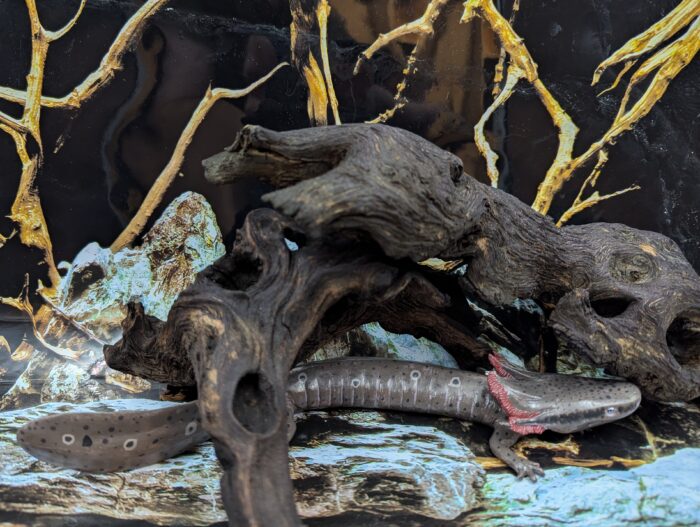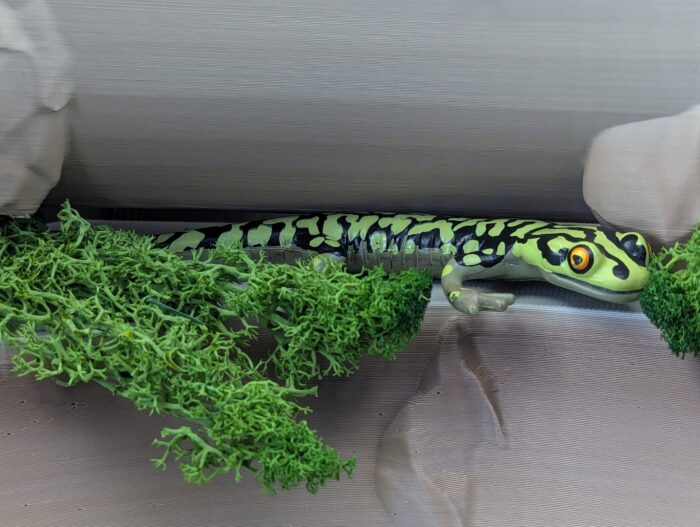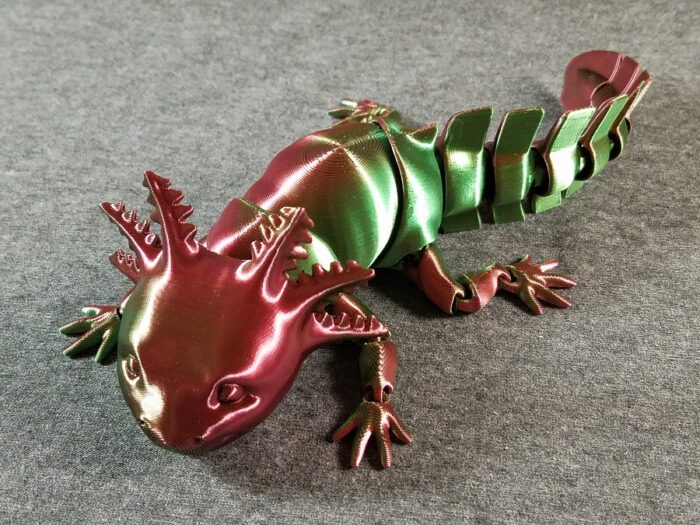Over the course of the summer I reviewed the entirety of Safari’s famous and sadly discontinued Tennessee Aquarium Salamanders line, a set of 7 life-like and life-size models released in 1995 (one in 1997) and retired in the mid-2000s. But I also hinted at a spiritual successor that, while not in the line, fits alongside them in theme, style, and production…also geographically.
Classification: Newts & Salamanders
Common Mudpuppy (Tennessee Aquarium Salamander Collection by Safari Ltd.)

So here we are–the final figure in the Tennessee Aquarium series from Safari, the only figure released after 1995 (1997 to be exact). This is the common mudpuppy Necturus maculosus, number 210672, probably the hardest to find one and, when stacked together, the largest and most imposing by a wide margin.
Axolotl (Little Wonders by CollectA)

Review and images by Suspsy; edited by bmathison1972
The axolotl (Ambystoma mexicanum) is a critically endangered salamander native only to Lake Xochimilco in southern Mexico City, Mexico. Only between 50 and 1000 individuals reside there, although there are many more being raised in zoos, research laboratories, and the pet trade.
Northern Crested Newt (Tennessee Aquarium Salamander Collection by Safari Ltd.)

For the first time since I introduced the Tennessee Aquarium salamander figures with the fire salamander we are going back to Europe, the northern crested newt, Triturus cristatus, and this is also the last European species in the series. This one is item number 210572, the sixth and final figure in the original 1995 releases–and the penultimate figure in the series overall.
Yonahlossee Salamander (Tennessee Aquarium Salamander Collection by Safari Ltd.)

Here is one more lungless plethodontid salamander from the official Tennessee Aquarium series, the yonahlossee salamander Plethodon yonahlossee, item number 210472. Probably the figure with the most distinctive colours, it may also be one of the salamander figures with the longest lasting presence on the various Safari lines overall.
Marbled Salamander (Tennessee Aquarium Salamander Collection by Safari Ltd.)

The next figure to discuss from the Safari Tennessee Aquarium is the marbled salamander, Ambystoma opacum, item number 210372. This is pretty much the smallest figure in the series, which is fitting as the marbled salamander is relatively small for it’s genus. Unlike the last few salamander figures we’ve looked at, this species is a member of the Ambystomatidae, the mole and giant salamanders; Ambystoma is the mole salamanders.
Red Salamander (Tennessee Aquarium Salamander Collection by Safari Ltd.)

The next figure to look at from Safari’s Tennessee Aquarium Salamander collection is the red salamander, Pseudotriton ruber, series number 210272. It represents a species that is fairly widespread in the United States east of the Mississippi river, from New York state south to Louisiana, Alabama and Georgia.
Green Salamander (Tennessee Aquarium Salamander Collection by Safari Ltd.)

Now for a review of another of the Tennessee Aquarium salamander models from Safari, this time the green salamander Aneides aeneus, product number 210172 in the line. Green salamanders are notable for a few features, not least of which is their distinctive green colour; this species is the only salamander in North America with green colouration.
Fire Salamander (Tennessee Aquarium Salamander Collection by Safari Ltd.)

After so many fish, it was time to take on a group of animals that I’m less familiar with…from a set that is either a holy grail for collectors (if they missed it), or a treasured part of the collection (if they didn’t miss it!) It’s a series of salamanders and newts produced by Safari Ltd in association with the Tennessee Aquarium.
Fire Salamander (Wild Life Europe by Schleich)

Review and images by Suspsy; edited by bmathison1972
The fire salamander (Salamandra salamandra) is one of Europe’s largest salamanders, reaching a length of 15-25 cm long. It usually resides in the deciduous forests of southern and central Europe, where it prefers to spend most of its time concealed under fallen leaf litter and logs.
Axolotl (Alotl Bit Crazy, LLC)

Review and images by Fembrogon; edited by bmathison1972
The trouble with collectibles is you often have to act quickly – or, at least, not slowly – to get what you want. The same is true if you wish to share your find with others. A while back I visited a local reptile expo and found myself coming home with several critters – not real ones, sadly, but ones of the plastic and plush varieties, charming enough in their own way to win over me and my wallet.
Axolotl (MatMire_Makes)

Review and images by Fembrogon; edited by bmathison1972
With the onset of commercial 3D printing and a growing number of online shops and artist-friendly websites, a new world of hidden treasures and surprises has opened up for collectors and hobbyists. One such surprise I recently encountered was featured on a table at a reptile expo, where the handlers were not only selling the typical real (and rather cute) reptiles, but also a selection of equally cute articulated toys.




